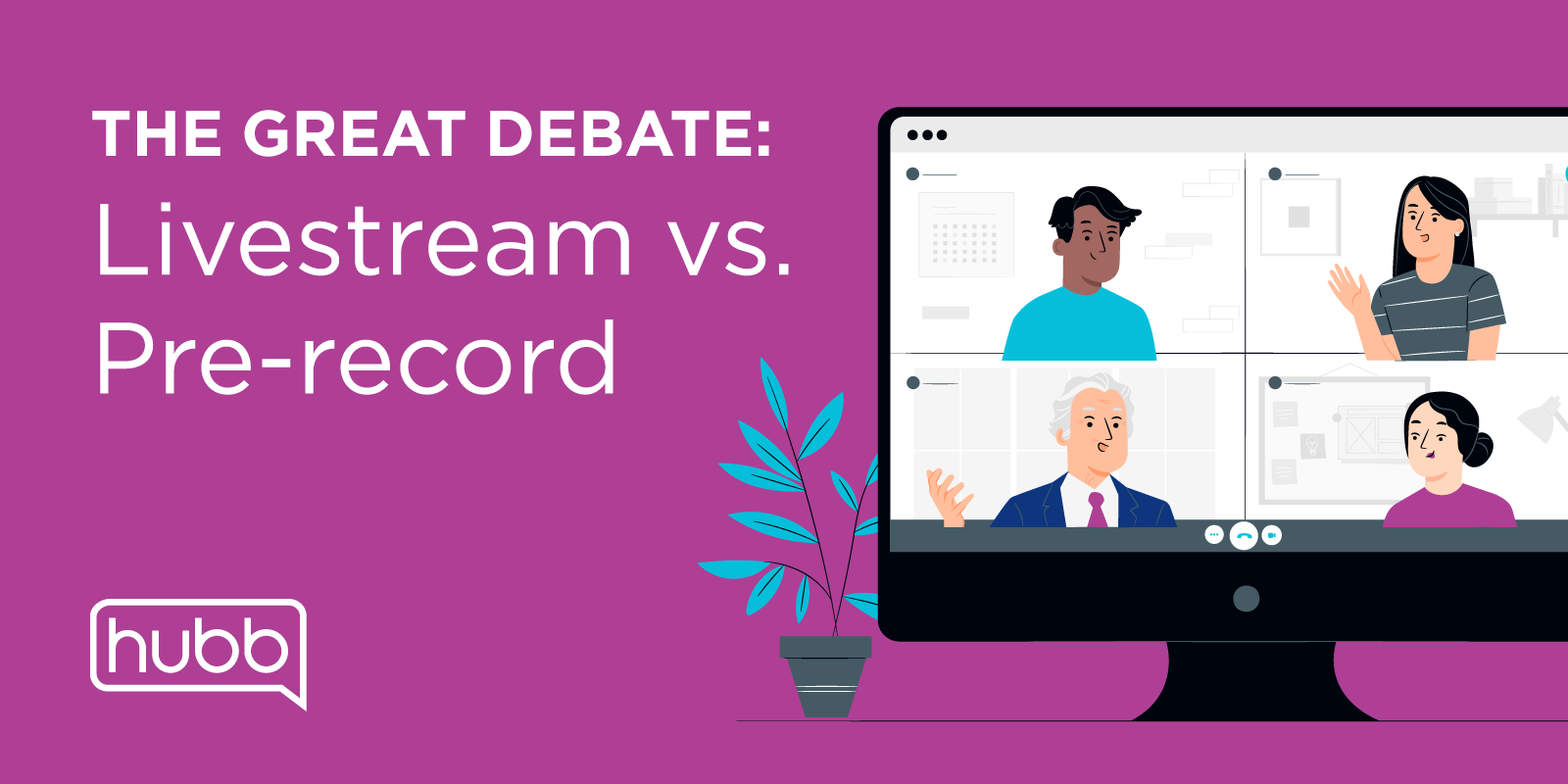 Is it live or is it Memorex? In a recent blog, we touched on the debate about pre-recorded versus live content for virtual sessions. Should presenters stream live or record before the event? Conference planners get this question quite a bit while trying to determine which session types are right for a virtual event. And we don’t think that’s the right question to ask.
Is it live or is it Memorex? In a recent blog, we touched on the debate about pre-recorded versus live content for virtual sessions. Should presenters stream live or record before the event? Conference planners get this question quite a bit while trying to determine which session types are right for a virtual event. And we don’t think that’s the right question to ask.
It’s really a question of risk.
First, we just have to say, “How will participants know if a session is live or not?’” Unless the presenter blows a snot bubble or holds up a newspaper when they recorded, they won’t. So the real question to be posed should focus on how much risk you are willing to take in terms of things going wrong. Most meeting planners that we know are not very tolerant of risk.
In a virtual environment, as long as there are not issues with the streaming, there is rarely a difference between prerecorded and live. Unless a speaker plans on adapting their content based on instant polls or what is happening in chat, presenting live creates risk without offering reward. Lots can go wrong. The internet can break or maybe the speaker doesn’t prepare adequately. It happens all the time.
Most speakers we know have a polished 45 minutes or so that rolls out the same each time, regardless of what’s happening in the virtual room. For these speakers, pre-recording is better for the event planner’s blood pressure and it offers the speaker the chance to really polish the content, even edit if necessary, before the event. And in those cases, the pre-recorded experience is the exact same for the attendees, without the risk of a live session.
Engagement should be your priority.
The real question planners and presenters should ask is, “How do I create my session content so that it’s engaging?” Interaction creates engagement and we’ve found that in a prerecorded session, the speakers are free to directly engage with the audience via chat. If they’re presenting live, they’re absolutely not doing that because they’re focused on presenting without mishap.
When speakers interact with participants, those in attendance feel recognized and are more engaged. Every single person can get recognition from that speaker. It is a little counter intuitive; if we are in-person, the live presentation affords more audience engagement. In a virtual situation, the pre-recorded presentation allows us to use the best of the format to engage the audience.
The result is a better rate of engagement. The audience is more into the content and they get more out of it. Participants feel like the content is more relevant to them and they feel like rock stars for being acknowledged by the speaker.
Everyone wins. The session goes off without a hitch — no internet outages or barking dogs or mustard on a tie — and the meeting planner drinks at the end of the day because they want to, not because they have to.
Real-time Q&A improves engagement.
Traditionally, at onsite events, Q&A happens at the end of a session. That is great for the participant who doesn’t have any questions. Time constraints rarely permit the presenter to answer all the questions, so they typically find themes and respond to the most commonly asked questions.
Now think about sessions you have attended. How many times have you gotten confused about something early in a session and then had to wait until the end to ask a question? If you’re fortunate enough to get your question answered, the content pieces presumably fall into place and everything makes sense in the end. We would argue that the wait for a question to be answered takes the participant out of the moment, limiting how much of the information they actually consume.
Interacting via chat during the presentation offers great benefits. If your speaker is interacting in the chat, attendees are getting their questions answered in real-time — helping participants educate themselves and follow the storyline.
So do you really want to do a live Q&A if technology allows you not to?
We favor pre-recording in most cases. That’s a function of understanding our audience and how they prefer to communicate. Our event participants value real-time chat, preferring it to a live Q&A at the end of a session where only a handful of questions are addressed.
To learn more about the interactive features of our virtual event platform, check out our website.

